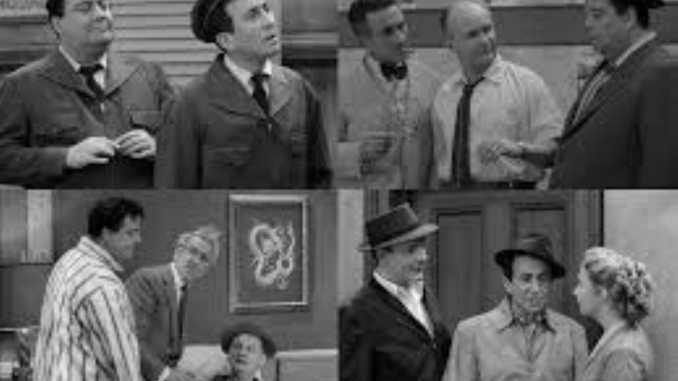
When fans recall The Honeymooners, the same four names always come first: Jackie Gleason, Art Carney, Audrey Meadows, and Joyce Randolph. Their chemistry created one of television’s most beloved ensembles, immortalized in the legendary “Classic 39.” Yet, behind this iconic quartet stood another figure whose presence was vital, though often overlooked — George Petrie, the versatile character actor who seamlessly slipped into countless roles and gave the show its texture.
Born in New Haven, Connecticut, in 1912, Petrie began his career in radio, where his commanding voice and natural timing earned him steady work in the 1930s and 1940s. As television emerged in the postwar years, he transitioned with ease, becoming a dependable presence in the new medium. By the early 1950s, Petrie had caught the attention of Jackie Gleason, who was assembling a team of reliable players for Cavalcade of Stars and later The Jackie Gleason Show.
Unlike the “core four,” Petrie was never tied to a single role. Instead, he became the utility man of The Honeymooners universe. In one episode he might be Ralph’s stern boss; in another, a patient police officer; and in yet another, a skeptical neighbor or authority figure. His adaptability gave Gleason enormous flexibility as a producer. Whatever the story required, Petrie could deliver — serious or comedic, authoritative or everyman. To viewers, he was instantly believable, and to Gleason, he was indispensable.
Part of what made Petrie invaluable was his ability to thrive in the chaos of Gleason’s style. Gleason was famous for his unpredictability — tossing out lines, changing scripts at the last minute, or improvising entire exchanges during a live broadcast. Many actors found this nerve-wracking. Petrie, however, rolled with it, always matching Gleason’s energy while never losing composure. His calm presence grounded the scenes, ensuring that Gleason’s spontaneity didn’t topple into disorder.
Offscreen, Petrie was admired for his professionalism and lack of ego. He embraced the role of a character actor, never seeking the spotlight or begrudging the fame that eluded him. For Petrie, the work itself was the reward. His colleagues often praised his humility, reliability, and sharp instincts, which made him a trusted figure in Gleason’s repertory company. Gleason himself frequently asked for Petrie by name when filling out smaller but important parts — a testament to the quiet respect he commanded.
Petrie’s career didn’t end with The Honeymooners. Far from it. He became one of television’s most familiar supporting faces for the next three decades. He appeared on Perry Mason, The Twilight Zone, The Untouchables, and even found a second wave of recognition in the 1980s as Harv Smithfield, the trusted lawyer on Dallas. His longevity underscored what audiences and producers had long known: George Petrie could do it all, and he could do it well.
Though he never reached leading-man status, Petrie represents a class of performers who quietly shaped television’s golden age. Without actors like him, shows like The Honeymooners would lack the depth and realism that made them so enduring. His characters may have been supporting, but they provided the structure upon which the stars could shine.
In remembering The Honeymooners, it is easy to celebrate Gleason’s bombast, Carney’s physical comedy, Meadows’ wit, and Randolph’s charm. But George Petrie deserves a place in that pantheon as well — not as the face on the marquee, but as the glue that held the world together. His legacy reminds us that sometimes, the most important players are the ones working quietly in the background, ensuring that every scene feels whole.

